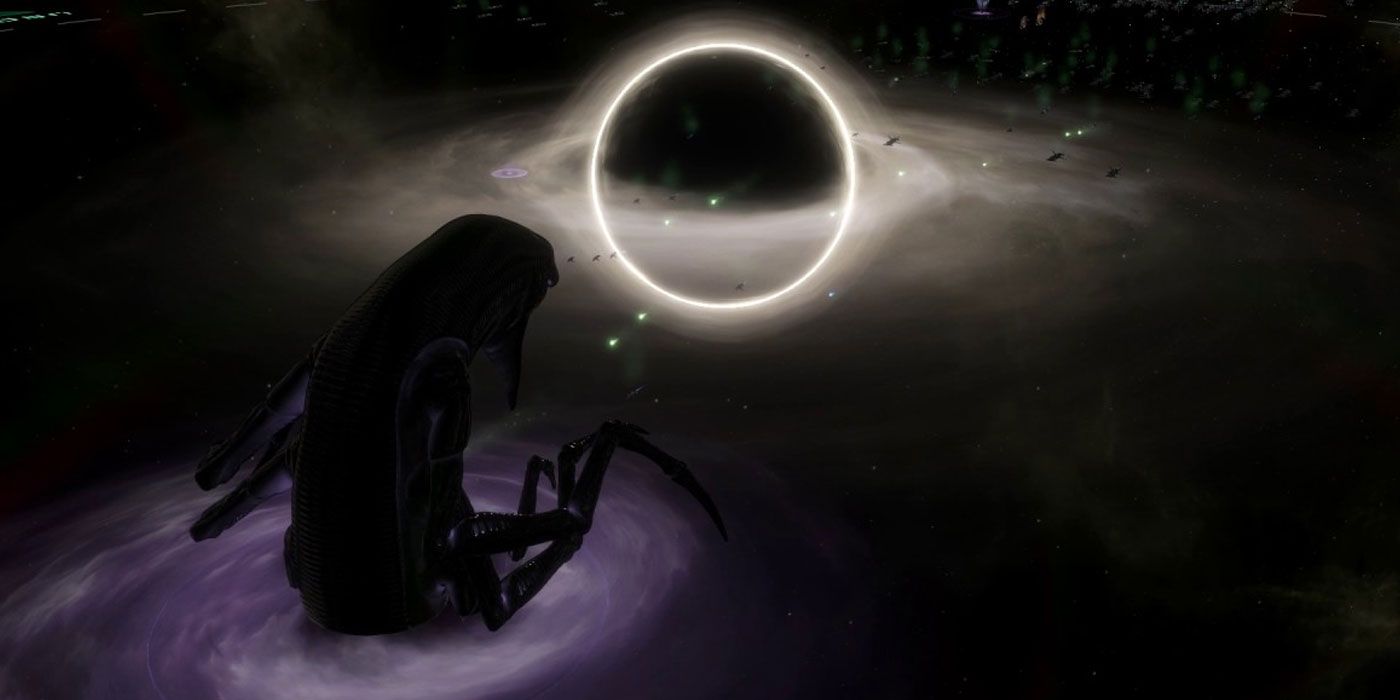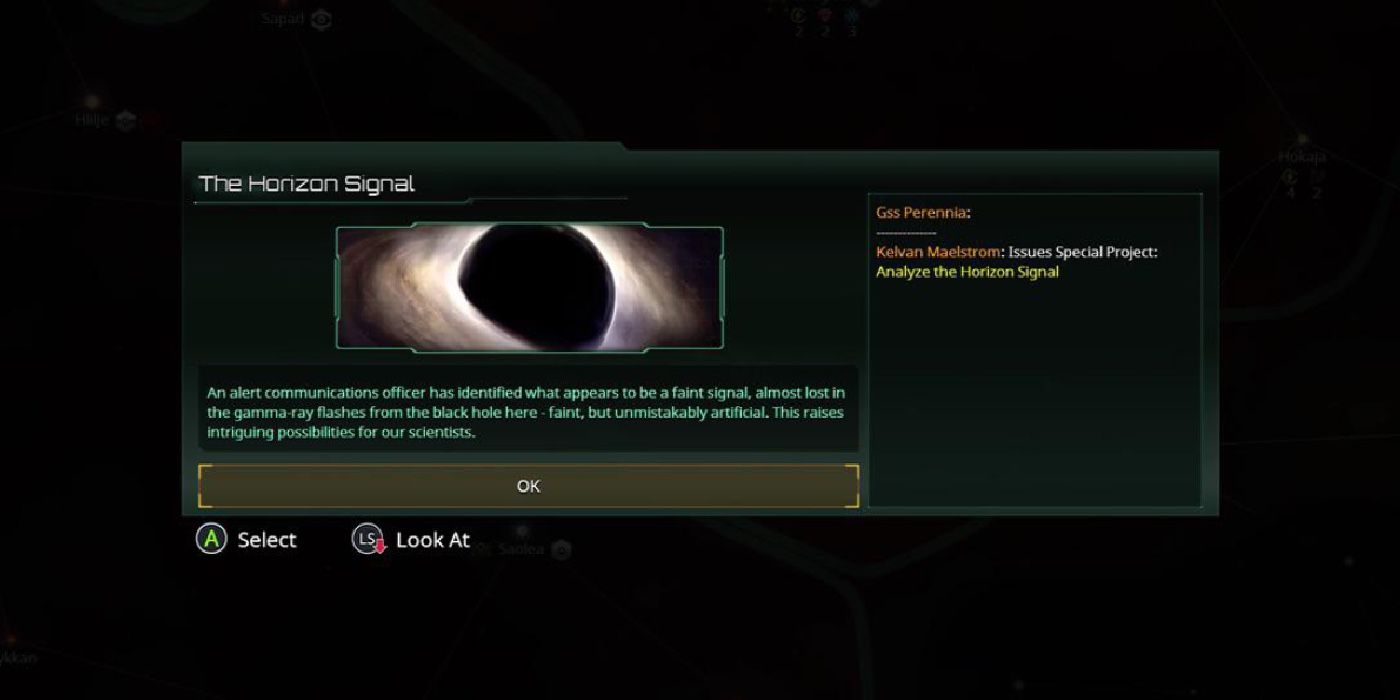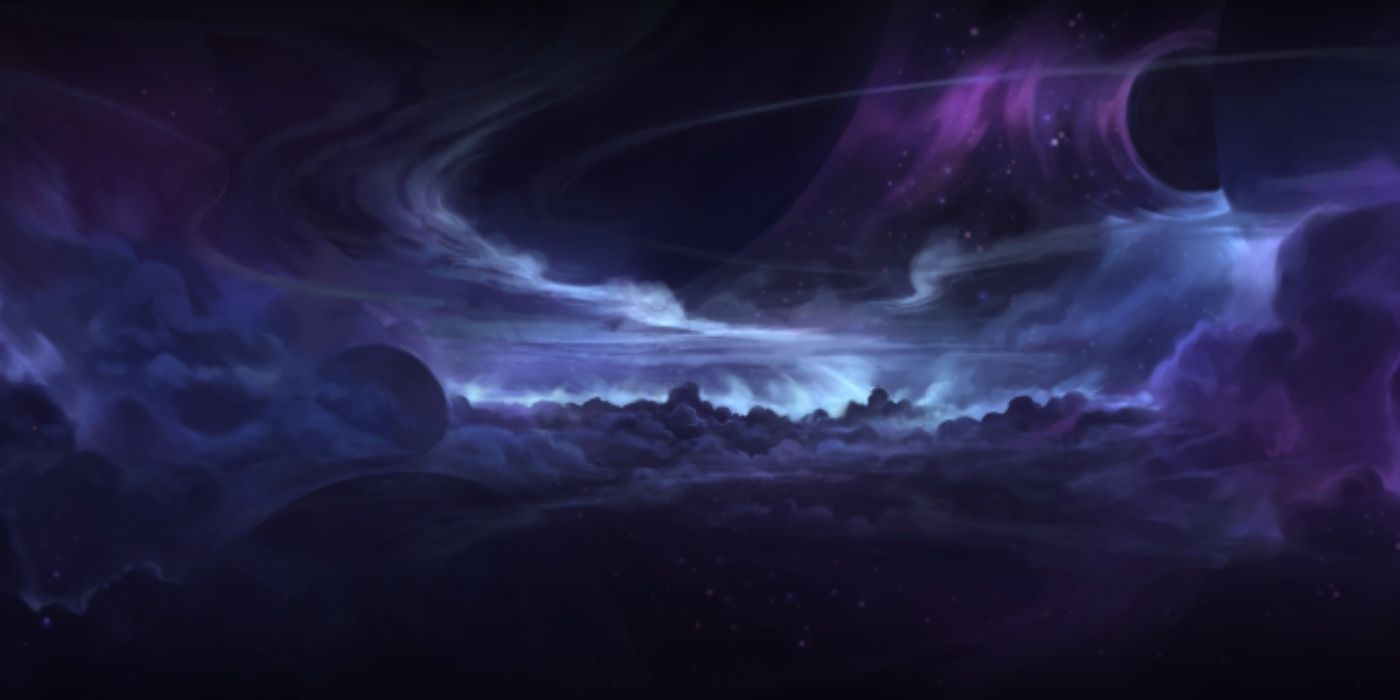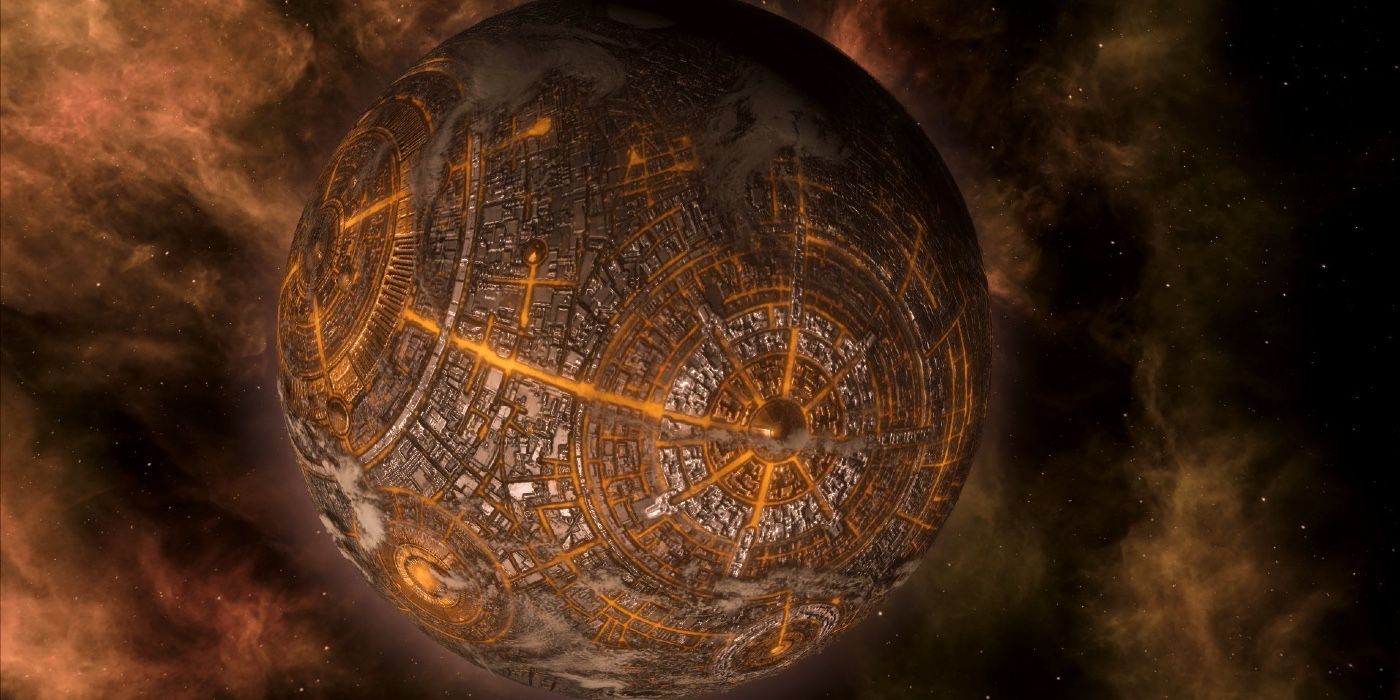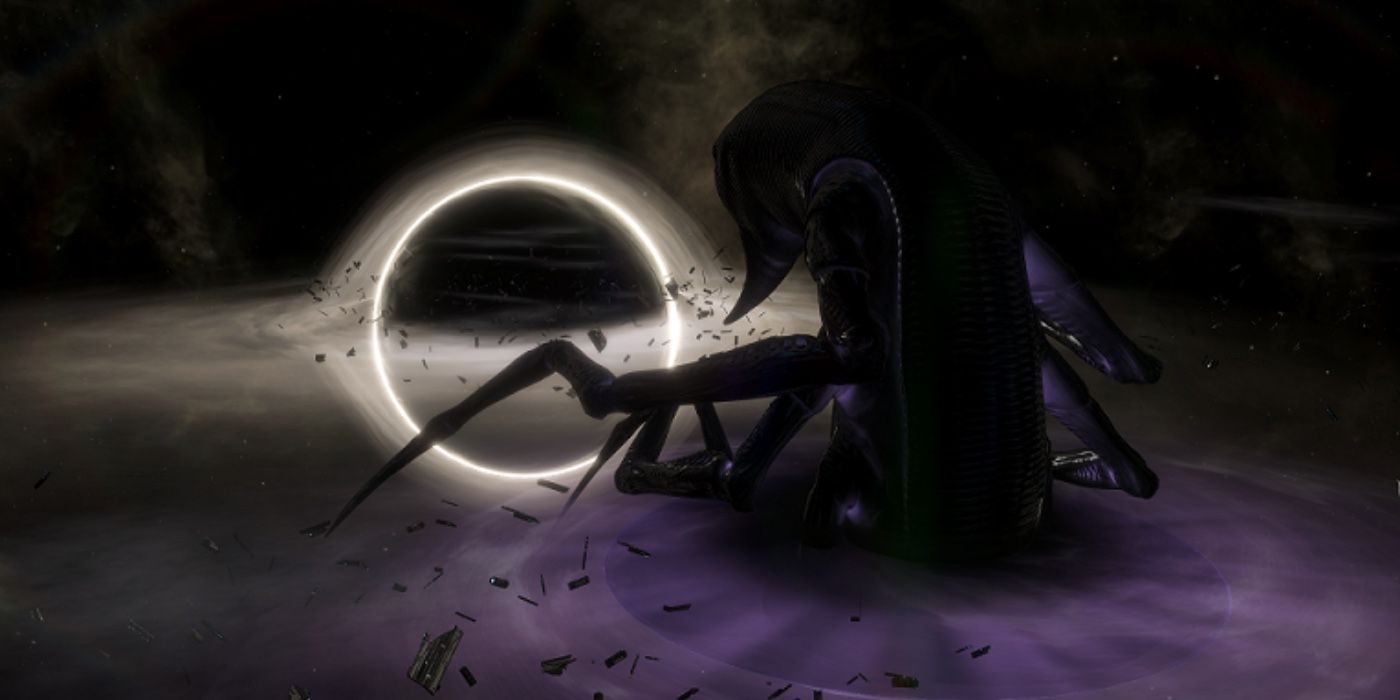A big part of the fun in playing Stellaris is exploring the galaxy and uncovering long-lost secrets and treasures in the form of events, some going even beyond human understanding. The infamous Horizon Signal is considered the rarest, longest, and most complex event chain any player could ever encounter in the game. The event was written by the British writer Alexis Kennedy and introduced in update 1.4 as a kind of Lovecraftian horror tale.
The initial event itself has a very small chance to trigger every time a science ship with a scientist assigned to it enters a black hole system. To increase your chances of the event popping up, you should have several science ships regularly travel through as many black hole systems as possible. It should be noted that the systems containing Guardian creatures like the Infinity Machine and the Dimensional Horror can never trigger the event, even after they’ve been defeated. This event is also unavailable for any Hivemind Empire with a Gestalt Consciousness.
If you finally get the initial event, you will be alerted with a special project called the “Horizon Signal.” You will have to send a science ship commanded by a scientist leader to investigate the signal. Once investigated, this leads to a new chapter called “Gravity is Desire,” where you will be given a set of coordinates inside the black hole to follow, which you have the option of following or not. If you decide it’s a trap and refuse, this will immediately end the questline. If you send the science ship to the coordinates, both the ship and scientist will be lost, but not before mentioning an entity called “The Worm.”
Within an in-game year later, the signal from the black hole will be active again with a new chapter called “The Worm,” but this time with the repeating phrases “what was shall be,” intones “what shall be was.” The signal will call for another scientist leader to enter the coordinates. You have the options of ignoring it and ending the event chain, permitting the scientist to go, and permitting them to go, but rigging their ship with explosives. If the ship is rigged with explosives, the scientist and ship are lost, but the signal disappears, and your Empire gains the Entropic Recursion research option in a chapter called “An Intervention.” If the scientist is allowed to go, they and the ship are lost, but the event chain will continue.
The next chapter, “The Trine the Quine the Shrine,” will reactivate the signal, again asking for another scientist to enter the coordinates, this time as part of a procedurally generated love poem strangely. Once again, you have the option of refusing to continue this event any further, sending the scientist with the ship rigged to explode, leading to “An Intervention,” or send the scientist unencumbered. If you send the scientist without rigging their ship, both will be lost, but you will gain a new science ship named the Foundling. Apparently, this was the first science ship sent into the Horizon Signal coordinates, but there is no sign of the crew. You will also gain the Entropic Recursion research option.
An in-game year afterward, a new chapter called “Signs in the Stone” will notify you of the Loop Temple, an ancient temple buried deep below on your capital planet that you have to study. Once the special project has been researched, it will say that the temple is dedicated to the “Waiting Worm” or the “Worm-in-Waiting.” You will have multiple options on how to proceed, one being to end the event chain by sealing the temple away and gaining 100-600 influence. The temple can be opened for the public providing a 5% boost to population happiness. It can be reserved for academic study only, giving you 300-2000 society research points. If your Empire is somewhat spiritualist, you can make the temple a place of pilgrimage, providing a 10% boost to population happiness. Aside from sealing away the temple, all of these decisions will give you the Strange Loop Doctrine's research option.
After gaining both the Entropic Recursion and Strange Loop Doctrine research options and completing them, you will now have the opportunity of researching a rare technology called Omega Theory. Completing this research will unlock a building called the Omega Alignment, which can only be built on your capital world and can never be demolished afterward. It will also provide a huge source of +16 Physics Research.
In between unlocking the Strange Loop Doctrine but not yet constructing the Omega Alignment, several optional events can pop up for you to interact with and research. These events are highly varied and can cause great changes to your Empire. They include changing the traits, ethics and civics of our species, having a fleet become rogue and attacking, examining strange ritual customs of a primitive pre-spaceflight species, or even strange problems on a colony world that could result in the entire planet being destroyed.
Once the Omega Alignment building has been completed on your capital, you will now have the option of researching a special project to generate an entry point. This will open a portal meant to summon the Worm to appear in your home system. By completing this special project, the Worm will appear and give you two final options for ending this event chain. You can consent to the creature’s demands, leading to a final chapter called “The Future.” This will cause any stars in your system to turn into a black hole, every planetary body aside from gas giants and asteroids will be transformed into tomb worlds, and every pop in your capital system will gain the Natural Physicist and Repugnant Traits, as well as a tomb world climate preference. If your starting system was humanity’s Sol System, this would give you 8-9 tomb worlds that you could terraform and colonize in the one system.
The second option to end this chain will be for you to attack the Worm and defeat it. This will cause the Worm to become hostile and appear in your capital system as a Dimensional Horror Guardian copy. By defeating the Worm, you will gain 1500-3000 energy credits, 1000-8000 physics research points, and if you have the Ancient Relics DLC, you will gain the Scales of the Worm relic. This relic has a passive effect of a 10% boost to physics research and a triumph effect of +20% research speed for all branches for 10 years, but -5 stability to all your planets for 10 years as well.

